Vector W8 – Supernova
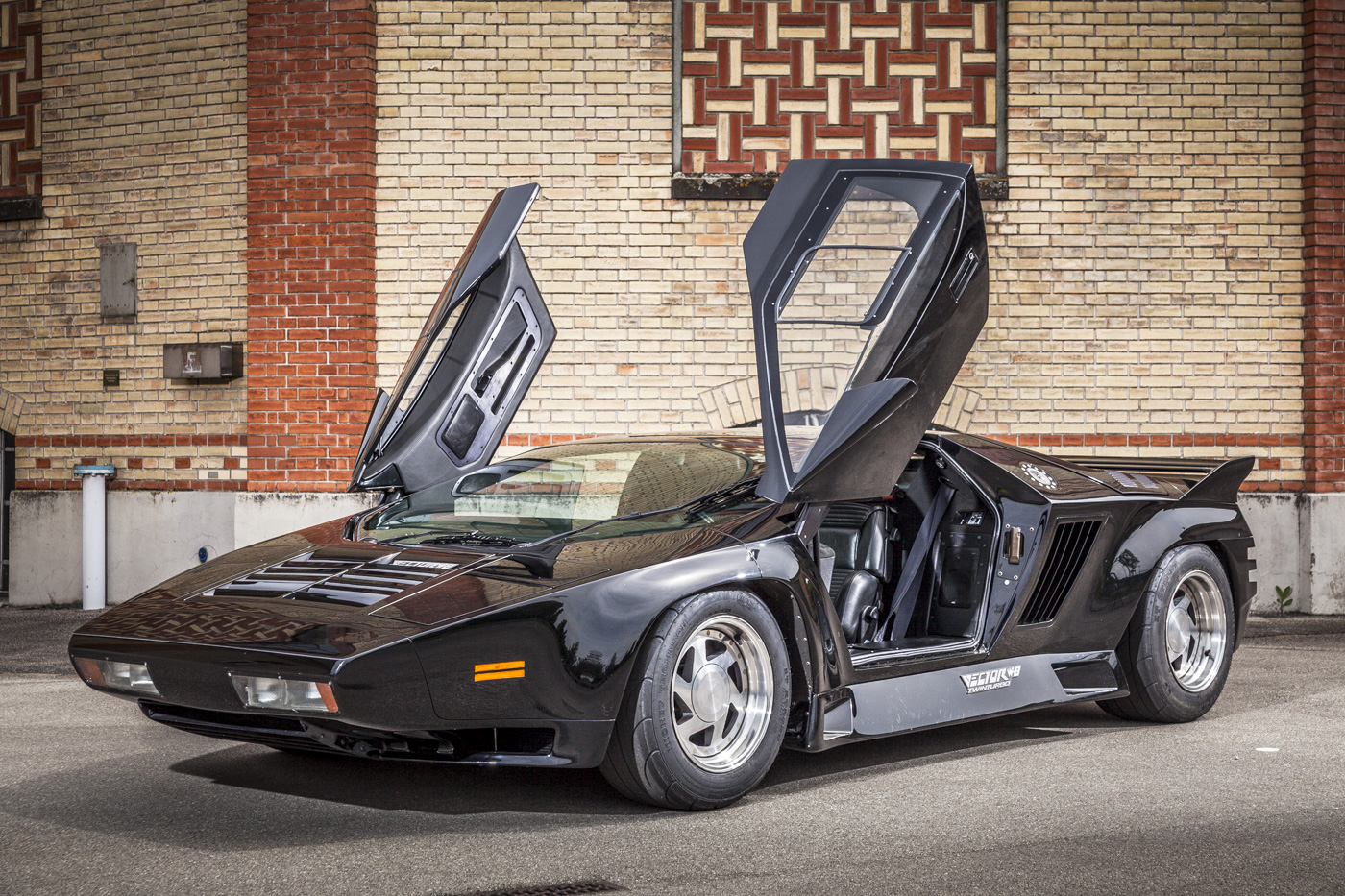
It’s a stealth fighter for the motorway, a hyperbole on wheels; the Vector W8 was designed to challenge the European supercar establishment. In terms of its extraterrestrial looks and spectacular performance, it did just that.
Just look at that dashboard. It’s packed with buttons and switches taken directly from military jets like the F-16 or F/A-18, with a large screen to the left of the steering wheel that, I’m told, is also used in the American M1A1 Abrams battle tank. The screen digitally displays all the car’s functions in orange bar graphs and diagrams – unless there’s light shining on it, in which case it’s nearly invisible.
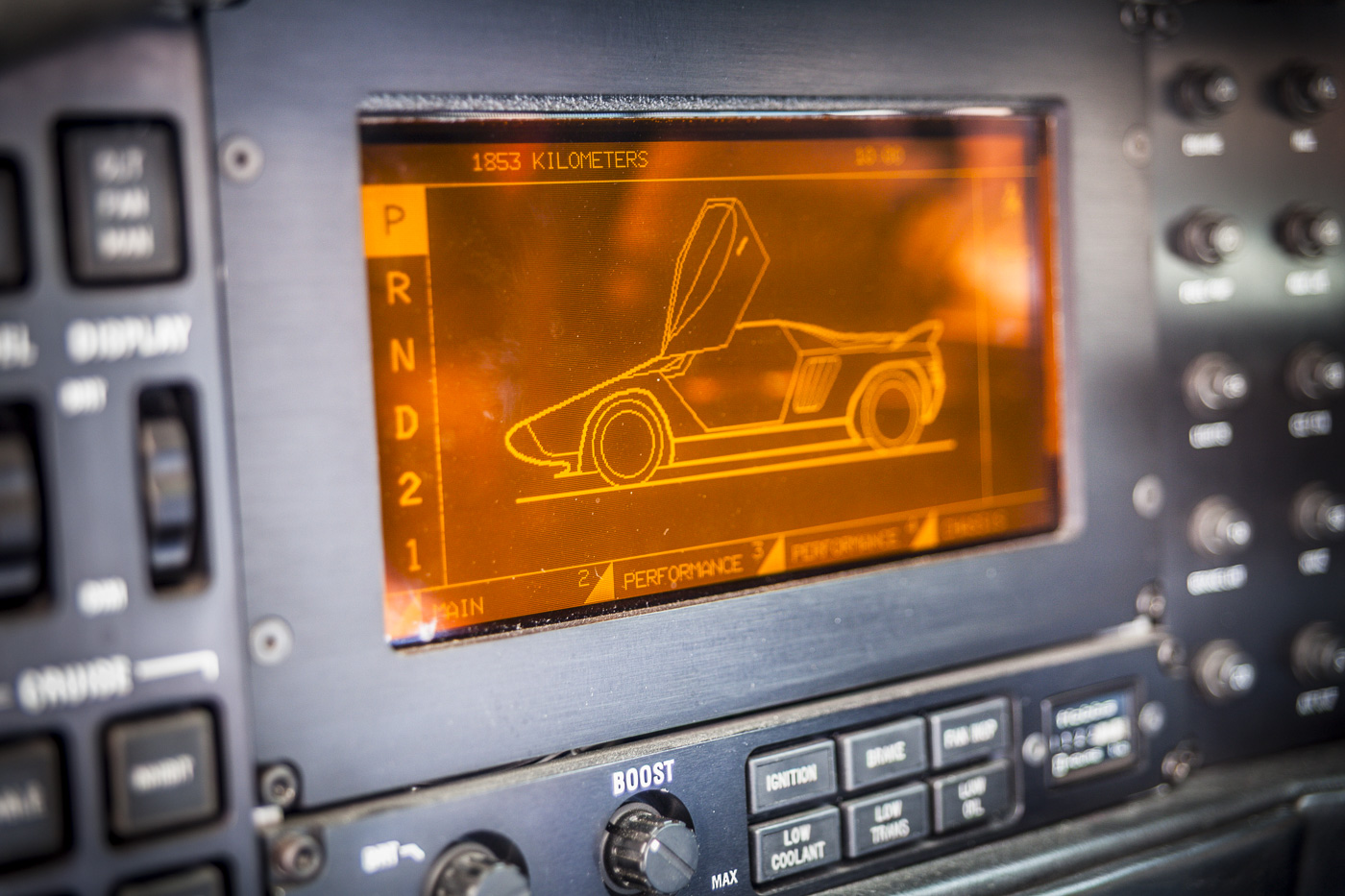
Other aviation influences include the gear lever, positioned to my left, which is designed like a fighter jet’s throttle control. There’s even a proper head-up display. And, incredibly, a compass on the dashboard. Could it be any cooler? Shame you have to start it with a regular key.
That’s the good news. The bad news is that side visibility is dreadful, and rearward visibility is practically non-existent. Getting in and out of the car is an operation akin to sneaking into bed as quietly as possible after a heavy night out, only to find that your partner has replaced you with the dog as punishment. Just one climb over the enormous door sill, past the upward-hinged door, your hip will be sending a sharp warning pain that you shouldn’t be attempting too many more contortionist moves like this.
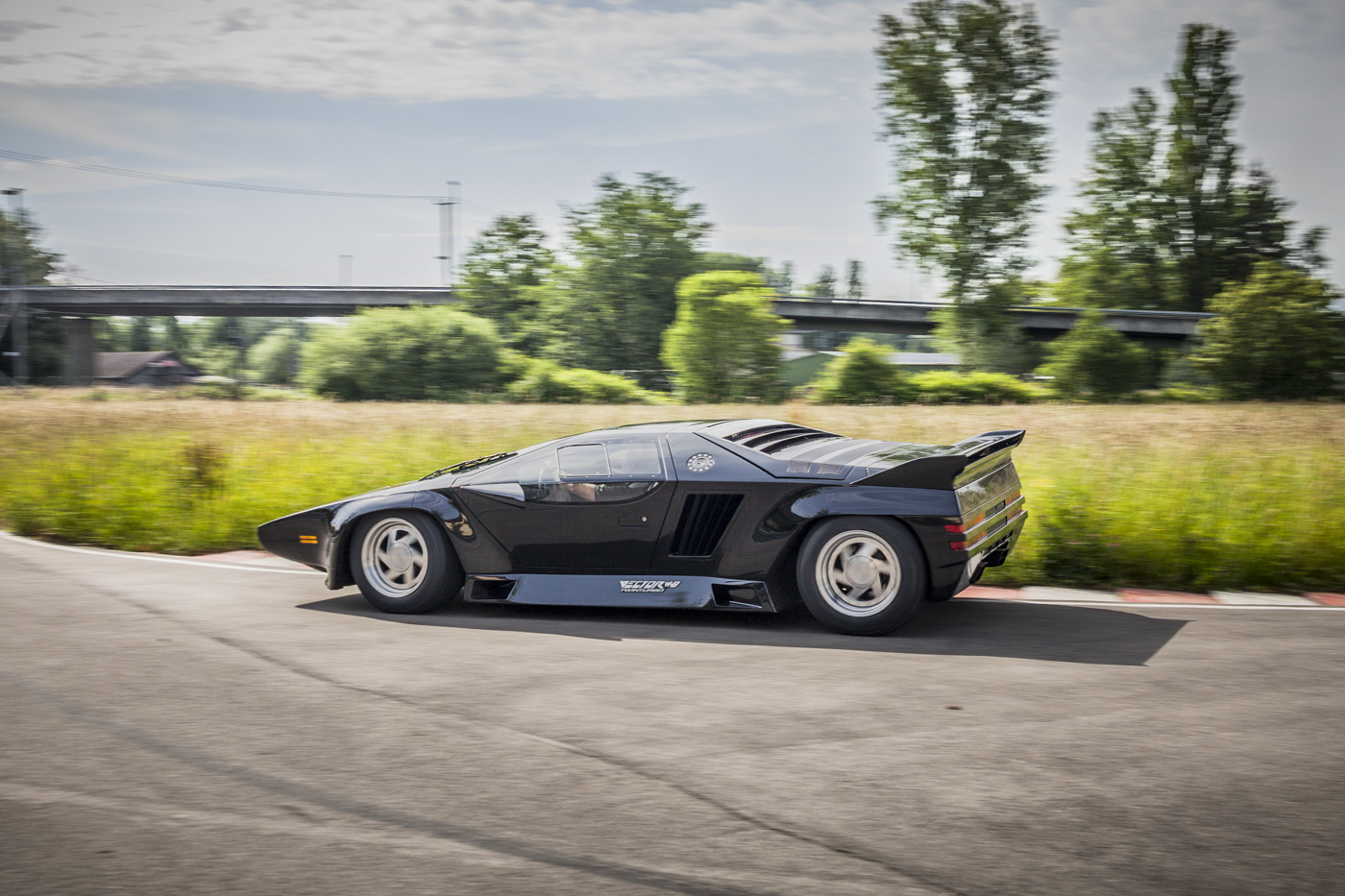
Bold and Ambitious
The Vector may look like it’s from another planet, but it hails from Venice, a trendy artist district in Los Angeles, where Gerald Alden (Jerry) Wiegert settled in the late 1970s. At the start of that decade, after studying industrial design (including at the prestigious ArtCenter College of Design in LA), Wiegert worked for Chrysler, Ford, and General Motors. But before long, he started dedicating more time to a project he had been dreaming of for years: building an American supercar. It wasn’t a bad idea – at the time, what did America offer supercar enthusiasts? Nothing.
Even as a student, Wiegert looked around and saw that there was nothing being built in the US that could rival the top-tier European machines emerging from Porsche, Ferrari, Lamborghini, Aston Martin, and Jaguar. That irritated him. He resolved to teach the Europeans a lesson – the American way: bold and ambitious.
He teamed up with Lee Brown to form the design studio Vehicle Design Force and in 1972 presented the Vector, a spectacularly designed concept car. Brown soon left the project.
Wiegert renamed his company Vector Aeromotive, set up shop on Abbot Kinney Boulevard in Venice, and six years later unveiled his next creation: the W2, built in a former fire station. The W2 attracted massive media attention, not just for its radical styling but also because Wiegert claimed it had an almost unbelievable top speed of 370 km/h. The W2 never progressed beyond the prototype stage, but over the years it evolved into the technically similar yet visually refined W8 Twin Turbo, which was officially launched as a production car in 1989.
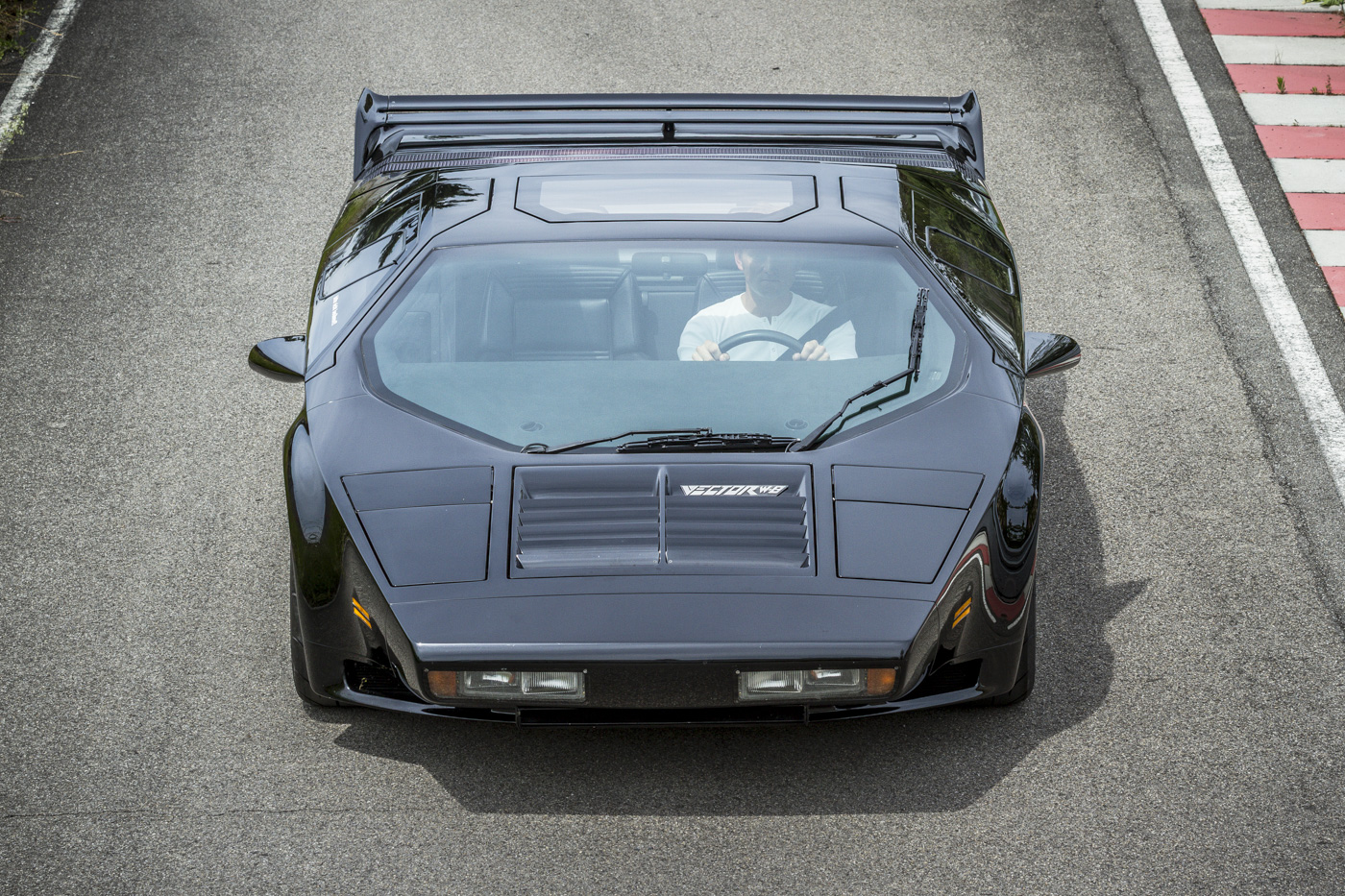
Sinister Presence
Feeling like you’re sitting in a fighter jet inside the Vector is no coincidence. From the outset, Wiegert planned to integrate military aviation technology into the car – hence the company name, Vector Aeromotive. He believed this technological crossover would make his creation the best car in the world.
The semi-monocoque chassis was made from an aluminium honeycomb floor and aluminium panels bonded with epoxy resin and riveted, just like in aerospace construction. The body was crafted from Kevlar, carbon fibre, and fibreglass. With a weight of just over 1,500 kg and a 625 hp twin-turbocharged 6.0-litre Chevrolet V8 mounted transversely midship, it was designed to obliterate its European rivals.
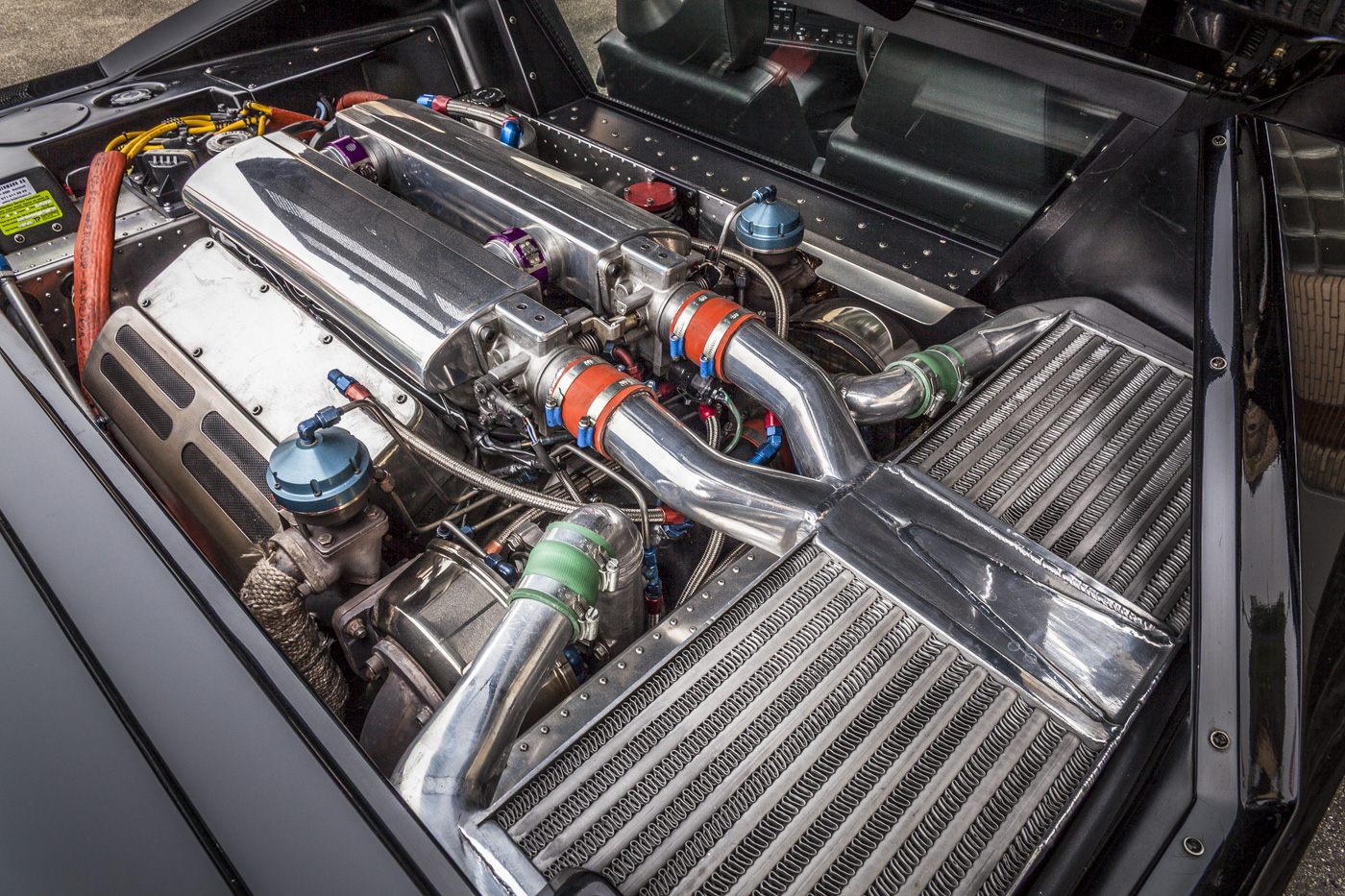
The specs were impressive, but it was the design that left the most lasting impression. Nothing looked like this American Psycho. Even the striking Lamborghini Countach, in production since 1974, didn’t have such a menacing presence. That was entirely intentional – Wiegert wanted his Vector to be 100% American, better built than its European counterparts, and outrageously fast, while looking the part.
In its final form, as it rolled off Wiegert’s production line in Wilmington, Los Angeles, the W8 was low, wide, and extremely wedge-shaped. Its razor-sharp waistline, pronounced wheel arches, aggressive snout, massive rear panel, and horizontally structured tail end give it a menacing, almost sinister appearance – especially in this jet-black colour. The design isn’t timeless, but in terms of visual impact, the Vector remains a show-stopper.
Brutal Performance
And it feels just as dramatic, although the experience is marred by a few niggles. The three- speed automatic gearbox is a letdown, struggling to handle the immense power of the heavily modified aluminium V8, with its custom pistons, twin Garrett turbos, and other bespoke components built to unleash the Vector’s full fury.
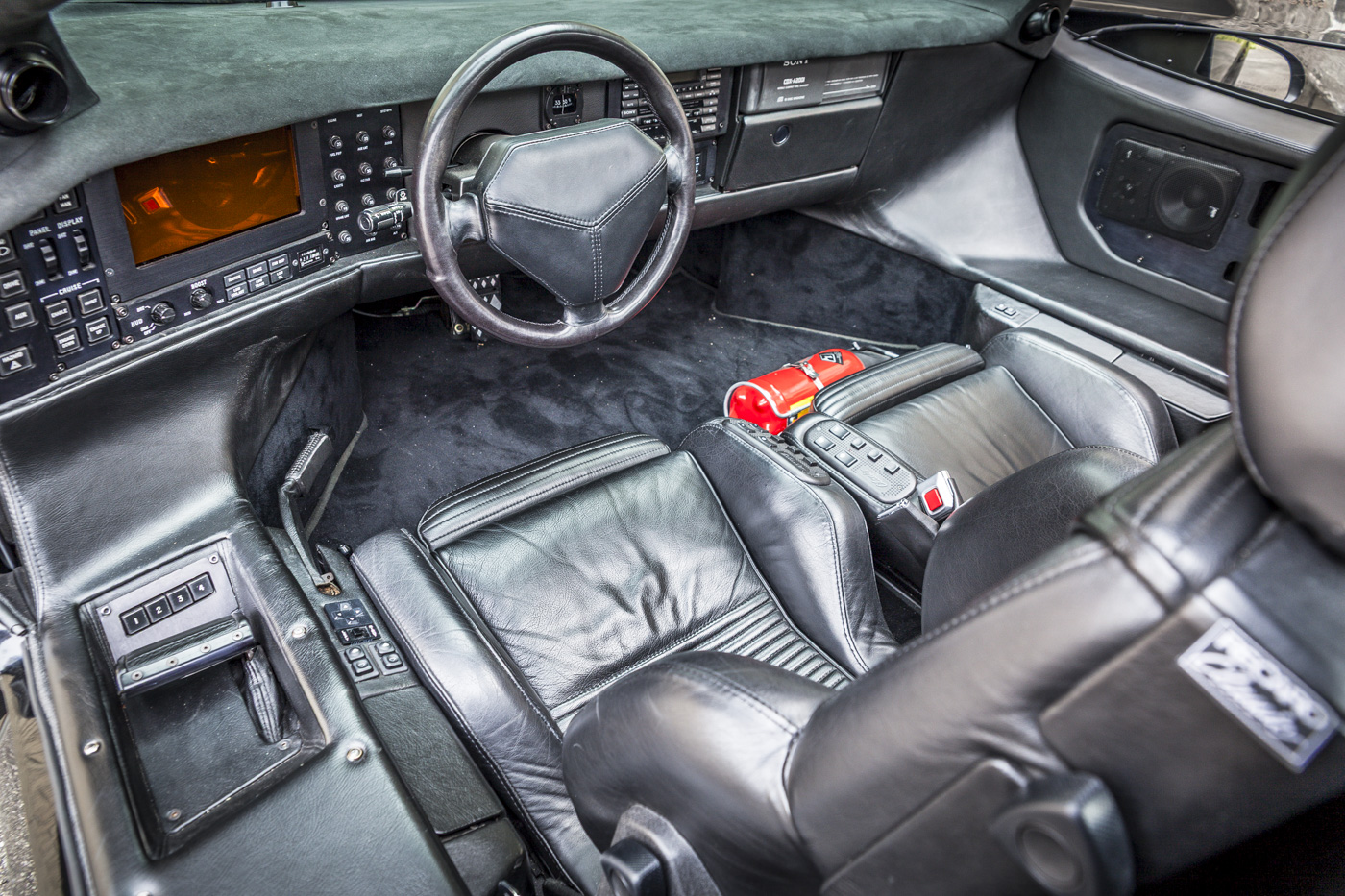
The tough-looking gear lever is heavy to operate, and the Oldsmobile-derived transmission shifts with brutal force, sounding like it’s about to fall out at any moment. Maneuvering is a nightmare, not just due to the atrocious visibility but also because the turning circle is the size of a continent. The engine note inside is deafeningly glorious.
The W8 handles with weight but surgical precision, showing minimal body roll in fast corners. And it’s effortlessly, absurdly quick – first gear alone takes you well past 110 km/h.
A Supernova’s Legacy
The W8’s story is really the story of Jerry Wiegert’s relentless pursuit of investors. While the car drew interest from wealthy buyers, few were willing to fund Vector Aeromotive. Each hand-built W8 was enormously expensive to produce, with a price tag of around $448,000 at launch – even surpassing the Ferrari F40 in the US.
Ultimately, only 17 production W8s were built, alongside two prototypes. The Vector W8 Twin Turbo stands as the lone testament to Wiegert’s dream of creating America’s first supercar. Once dismissed as an extravagant relic of the 1980s, today it commands respect.
Like a supernova, the Vector briefly outshone all the stars in the supercar universe. But, as Wiegert now knows all too well, a supernova is merely the dazzling death throes of a giant star. And worse still – it always collapses into a black hole.
